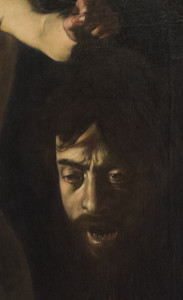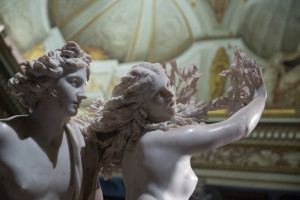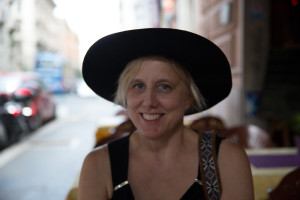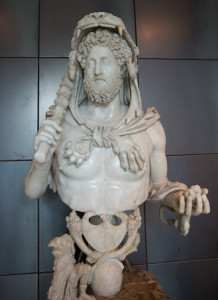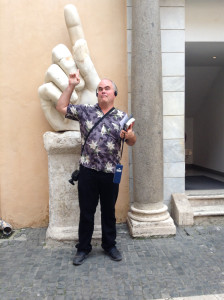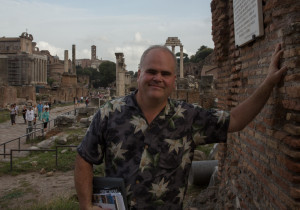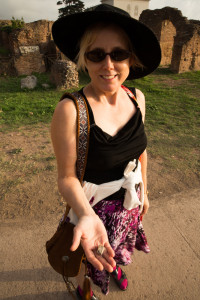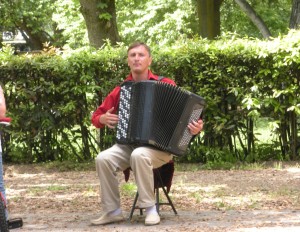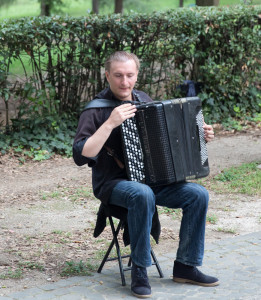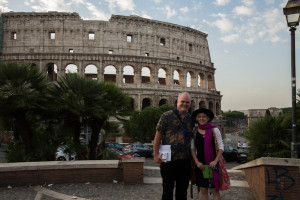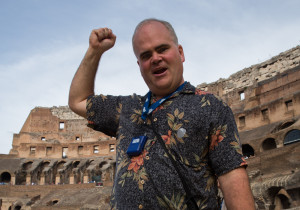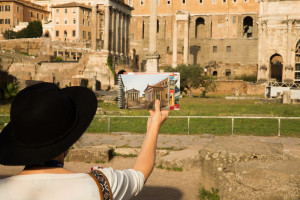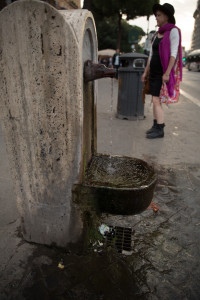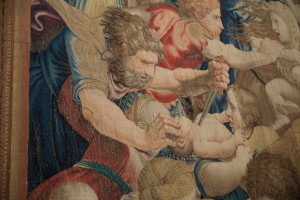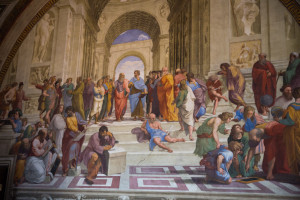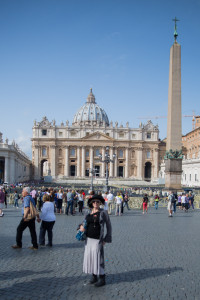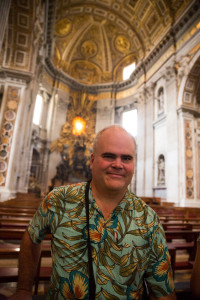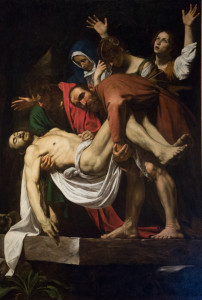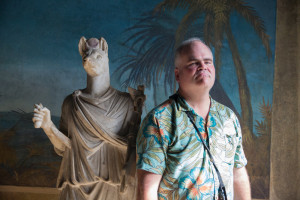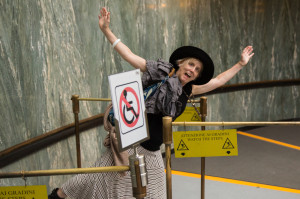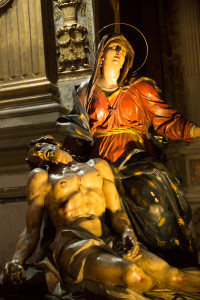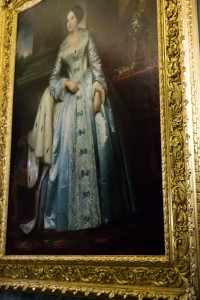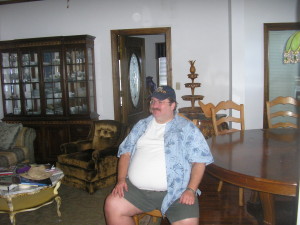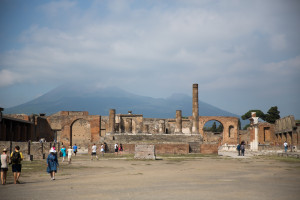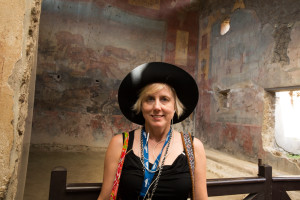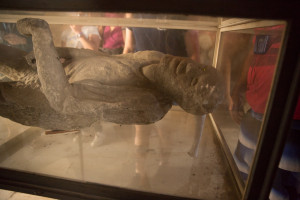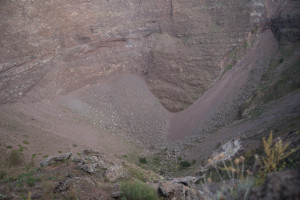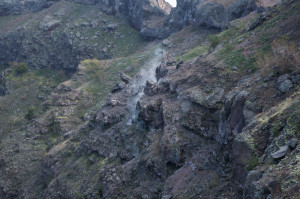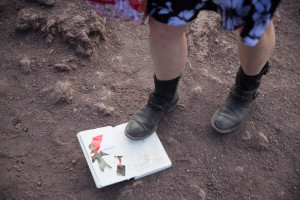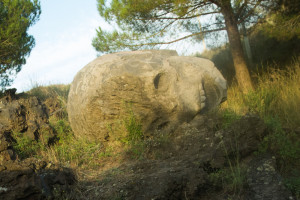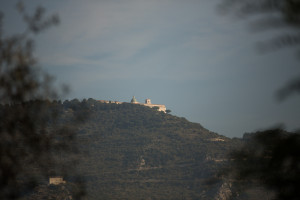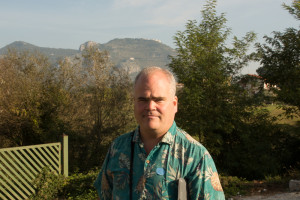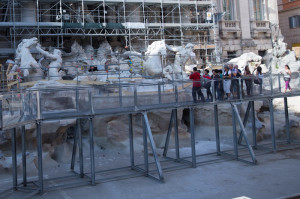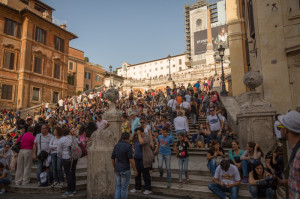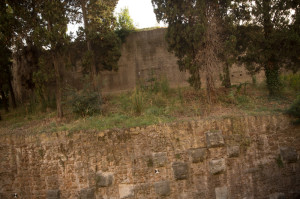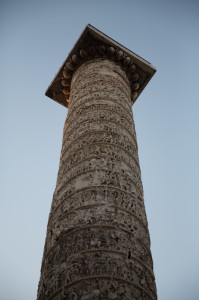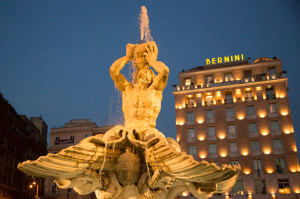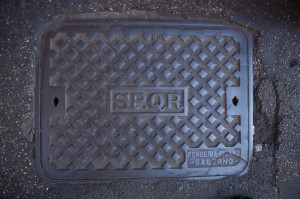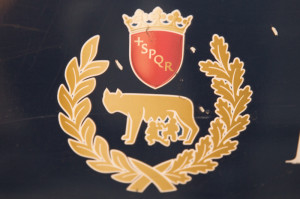We’re on our last full day in Rome. Â Our stay has been marvelous. Â There’s been three themes:
1. Great art.
2. Amazing history.
3. Great food.
Today included all of these.
First, the art. Â We spent the morning in the Galleria Borghese where one can see the palace and art collection of a 17th century cardinal. Â Cardinal Borghese used money, power, threats, and extortion to put together an astonishing art collection. Â While it’s not the largest art museum out there, piece for piece it’s one of the best collections I’ve seen, right up there with the Louvre. Â Among many other things, it has major paintings by Caravaggio and sculpture by Bernini, two guys who are quickly climbing to the top of my list of favorite artists. Â Here’s a couple of poorly photographed examples:
This is a detail of a Caravaggio painting of David holding the head of the slain Goliath.  The key thing to note is that Goliath is a self-portrait of Caravaggio, painted as an expression of guilt over a man he had killed in a duel.  Caravaggio hoped to get a pardon as a result and be able to return to his home in Rome.  He got the pardon, but alas died before he got back.
Here’s a Bernini sculpture of Apollo and Daphne.  Apollo is on the verge of capturing Daphne when Daphne’s father, a river god, turns her into a tree to protect her from Apollo.
This sculpture has to be seen to be believed. Â Daphne is transforming into the tree even as Apollo is grabbing her. Â Her toes are taking root, her skin is turning to bark, and her fingers are sprouting leaves. Â It’s hard to believe that this can be done in marble.
Cardinal Borghese was patron to both Bernini and Caravaggio. Â The man clearly had taste.
After a quick lunch:
we headed off to the Capitoline Museum, a collection that combines art and history. Â Here, for example, is an ancient statue of the emperor Commodus:
Doesn’t look at all like Joaquin Phoenix, does he?
And here’s some guy standing next to the remnant of a giant statue. Â That must have been some statue!
After that, we returned to the ruins of ancient Rome.  Once again, I found being there incredibly evocative.  Walking down the street that Cleopatra took into the city.  Seeing the stone where Julius Caesar was cremated.  Walking through the room where the Emperor Domitian was assassinated.  I can’t think of a place on earth that has so much history that had such an impact on our modern world.  Even our language comes from the names of places where I stood today (Capitoline Hill, which led to the word “capitol”; Palatine Hill, which led to “palace”).  Rome is not where western civilization was born, but  it is where it grew to adulthood.
And while we’re talking about amazing things, here’s Julie, holding a piece of mosaic tile that she found on Palatine Hill. Â Roman emperors probably stepped on that little piece of stone in her hand.
(She tossed it back. Â Taking relics from Rome is not a good thing.)

